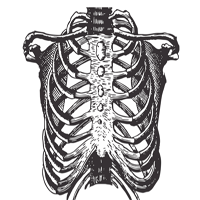 Smart Citations
Smart CitationsSee how this article has been cited at scite.ai
scite shows how a scientific paper has been cited by providing the context of the citation, a classification describing whether it supports, mentions, or contrasts the cited claim, and a label indicating in which section the citation was made.
Safety and differences between direct oral anticoagulants and vitamin K antagonists in the risk of post-traumatic intrathoracic bleeding after rib fractures in elderly patients
Closed chest traumas are frequent consequences of falls in the elderly. The presence of concomitant oral anticoagulant therapy can increase the risk of post-traumatic bleeding even in cases of trauma with non-severe dynamics. There is limited information about the differences between vitamin K antagonists and direct oral anticoagulants in the risk of post-traumatic bleeding. To assess differences in the risk of developing intra-thoracic hemorrhages after chest trauma with at least one rib fracture caused by an accidental fall in patients over 75 years of age taking oral anticoagulant therapy. This study involved data from four emergency departments over two years. All patients on oral anticoagulant therapy and over 75 years of age who reported a closed thoracic trauma with at least one rib fracture were retrospectively evaluated. Patients were divided into two study groups according their anticoagulant therapy. Of the 342 patients included in the study, 38.9% (133/342) were treated with direct oral anticoagulants and 61.1% (209/342) were treated with vitamin K antagonist. A total of 7% (24/342) of patients presented intrathoracic bleeding, while 5% (17/342) required surgery or died as a result for the trauma. Posttraumatic intrathoracic bleeding occurred in 4.5% (6/133) of patients receiving direct oral anticoagulants and 8.6% (18/209) of patients receiving vitamin K antagonist. Logistic regression analysis, revealed no difference in the risk of intrathoracic haemorrhages between the two studied groups. Direct oral anticoagulants therapy presents a risk of post-traumatic intrathoracic haemorrhage comparable to that of vitamin K antagonist therapy.
How to Cite
PAGEPress has chosen to apply the Creative Commons Attribution NonCommercial 4.0 International License (CC BY-NC 4.0) to all manuscripts to be published.

 https://doi.org/10.4081/ecj.2021.10284
https://doi.org/10.4081/ecj.2021.10284





